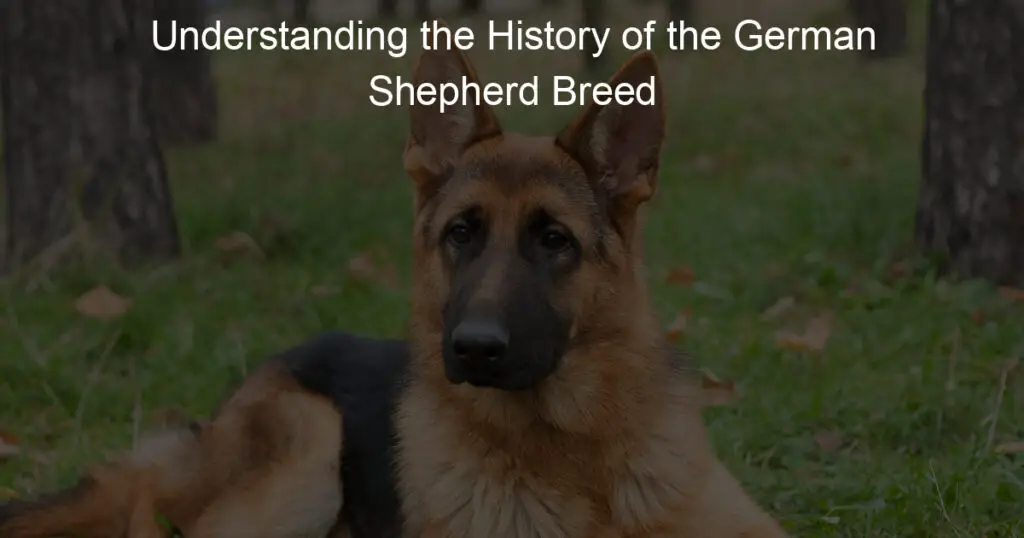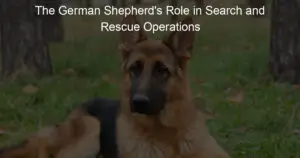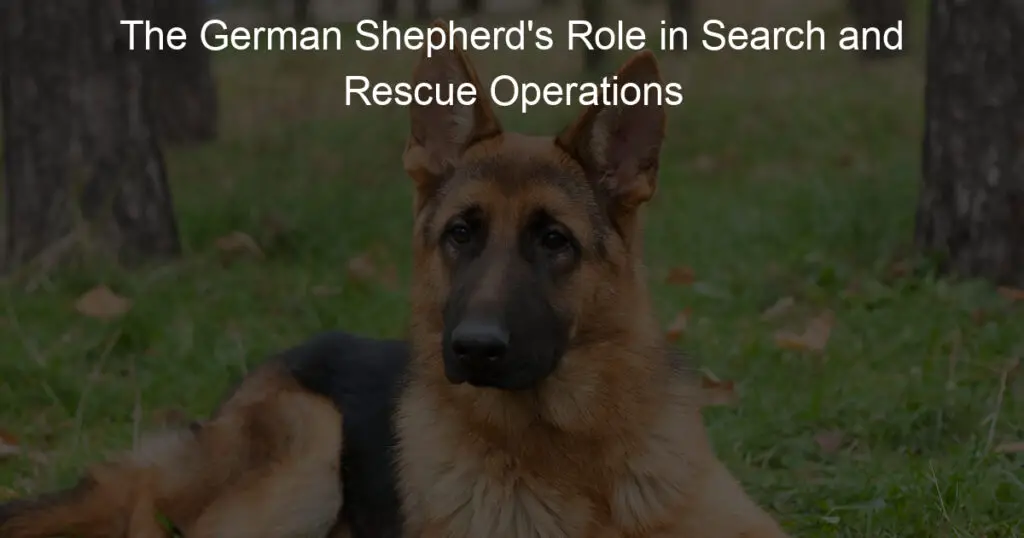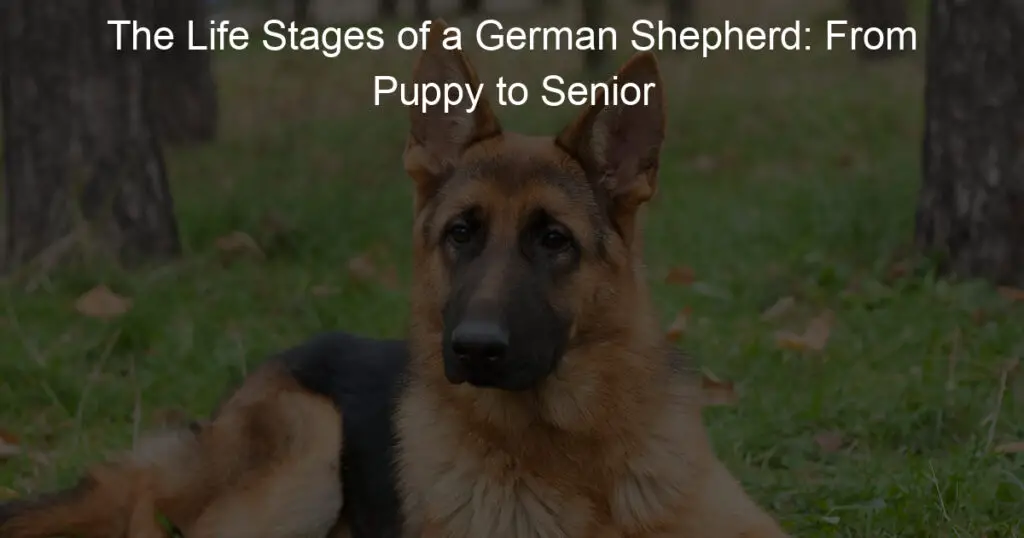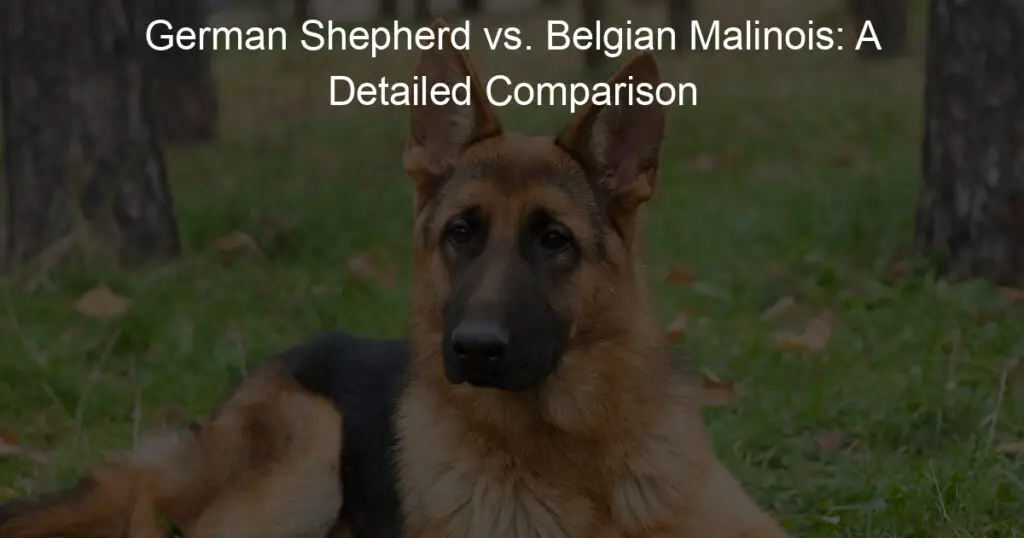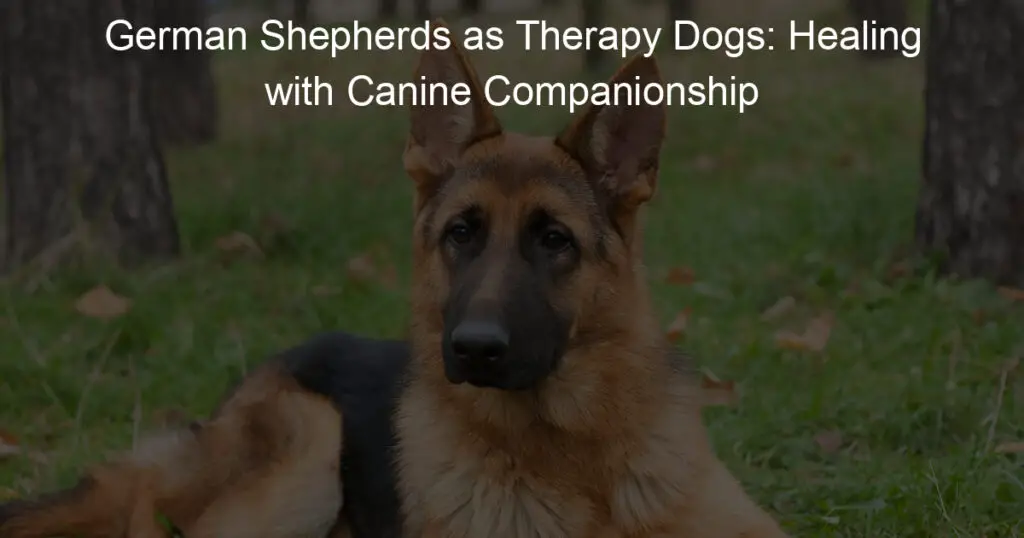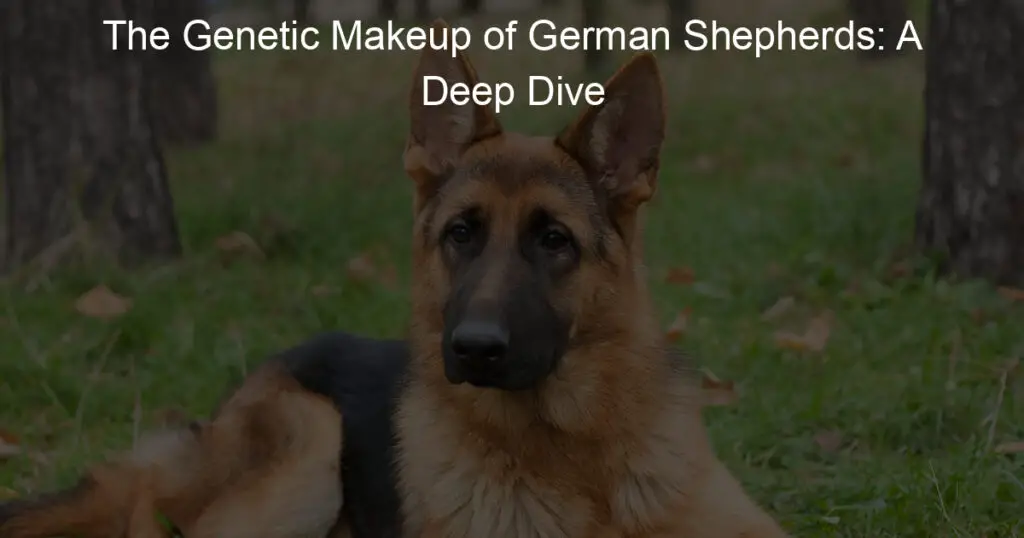This blog post delves into the rich history of the German Shepherd breed, providing an in-depth look at their origins, their roles in society throughout various historical periods, and the characteristics that have made them one of the most popular dog breeds today. From their beginnings as working dogs in Germany to their status as beloved pets and service dogs, this post will provide a comprehensive overview of the breed's fascinating history.
The Origins of the German Shepherd
The German Shepherd breed has a rich history that dates back to the late 19th century. It originated in Germany and was developed by a man named Max von Stephanitz. He was a captain in the German cavalry who wanted to create the perfect working dog. He believed that by selectively breeding German herding dogs, he could achieve his vision.
One of the key influences in the creation of the German Shepherd breed was the desire for a versatile and intelligent working dog. Stephanitz wanted a dog that could excel in multiple tasks such as herding, guarding, and search and rescue. He also wanted a dog that possessed a strong work ethic, loyalty, and a keen sense of smell.
To achieve this, Stephanitz began to selectively breed German herding dogs that displayed these desired traits. He focused on dogs with strong physical attributes, such as a powerful build, agility, and endurance. He also emphasized temperament, seeking dogs that were confident, trainable, and fiercely loyal to their handlers.
Stephanitz's efforts culminated in the creation of the German Shepherd breed, which was officially recognized in 1899. The breed quickly gained popularity and was widely used by the German military and police forces.
Why were they called 'Shepherd Dogs'?
The German Shepherd breed was initially referred to as 'Shepherd Dogs' because of their strong association with shepherding and herding tasks. These dogs were primarily used by German shepherds to assist them in their daily work of managing and protecting their flocks of sheep. The German Shepherd's natural herding instincts, intelligence, and agility made them well-suited for this role.
The term 'Shepherd Dogs' also reflects the breed's close connection to the German countryside and rural communities. In Germany, shepherding was an essential part of the agricultural industry, and the dogs played a vital role in ensuring the safety and well-being of the herds. The name 'Shepherd Dogs' thus became synonymous with the breed's purpose and function.
Furthermore, the term 'Shepherd Dogs' signifies the breed's ability to work closely with humans and follow commands. German shepherds were trained to respond to their shepherd's whistles, calls, or hand signals, allowing them to control and guide the flock with precision. This close bond between the shepherd and their dog was instrumental in maintaining order and protecting the sheep from predators or other potential dangers.
Over time, as the breed gained recognition and expanded its roles beyond shepherding, the name 'Shepherd Dogs' evolved into 'German Shepherds' to more accurately represent their country of origin. Today, while the breed is still known for its herding capabilities, it is also esteemed for its work in various fields such as police, search and rescue, therapy, and as loyal companions.
Max von Stephanitz and the 'Perfect' Working Dog
Max von Stephanitz is considered the father of the German Shepherd breed. Born in 1864, he was a German cavalry officer and a passionate dog enthusiast. It was his vision and dedication that led to the creation of a breed that would become known as the German Shepherd.
Stephanitz believed that the ideal working dog should possess specific traits, including intelligence, strength, agility, and loyalty. He wanted to develop a breed that could excel in various tasks, such as herding, guarding, and assisting the military and police forces.
In 1899, Stephanitz attended a dog show where he came across a dog named Hektor Linksrhein. Impressed by the dog's intelligence and physical attributes, he purchased Hektor and changed his name to Horand von Grafrath. Horand became the foundation dog for the German Shepherd breed.
Stephanitz founded the Verein für Deutsche Schäferhunde (Society for the German Shepherd Dog) in 1899 to promote the breed and establish a breed standard. He emphasized the importance of preserving the breed's working abilities over its appearance. Stephanitz famously said, "Utility is the true criterion of beauty."
Under Stephanitz's guidance, the German Shepherd breed gained recognition and popularity for its exceptional working abilities. He focused on selective breeding, ensuring that only dogs with the desired traits were used for breeding purposes. This approach helped solidify the breed's characteristics and set the standard for future generations of German Shepherds.
"Utility is the true criterion of beauty": Creating the Breed Standard
Max von Stephanitz, the founder of the German Shepherd breed, firmly believed that utility should be the primary consideration when determining the breed's standards of beauty. This philosophy guided him in creating the breed standard for German Shepherds, ensuring that their physical attributes aligned with their working abilities.
- 1. Defining the Ideal Structure:
Stephanitz emphasized the importance of a well-balanced and harmonious body structure for German Shepherds. He aimed for a dog that had the strength and agility to perform various tasks efficiently. This included features such as a strong, straight back, well-developed chest, and a powerful hindquarters. The breed standard was carefully crafted to ensure that the physical attributes of German Shepherds supported their working capabilities. - 2. Evaluating Temperament and Character:
In addition to physical attributes, Stephanitz recognized the significance of temperament and character in the breed standard. He sought to create a breed that was not only physically capable but also had a strong work ethic, intelligence, and loyalty. German Shepherds were expected to be confident, courageous, and obedient, making them well-suited for their roles as working dogs. The breed standard highlighted the importance of evaluating these traits to maintain the breed's overall temperament. - 3. Emphasizing Utility over Aesthetics:
Stephanitz's approach to creating the breed standard for German Shepherds was revolutionary for its time. While other breeds often focused on aesthetics and conformity to a specific appearance, Stephanitz prioritized the breed's utility. He believed that a dog's beauty should be measured by its ability to perform its intended tasks effectively. This emphasis on utility over aesthetics ensured that German Shepherds remained true to their working heritage and maintained their reputation as versatile and capable dogs.
The German Shepherd in World War I
During World War I, the German Shepherd breed played a significant role in various military operations. Their exceptional intelligence, loyalty, and versatility made them invaluable assets on the battlefield. German Shepherds were used for a wide range of tasks, showcasing their adaptability and bravery in the face of adversity.
One of the primary roles of German Shepherds during the war was as messenger dogs. These dogs were trained to traverse the treacherous conditions of the battlefield and deliver messages between different units. Their keen sense of smell, agility, and intelligence allowed them to navigate through the chaos and danger of war, often under heavy fire. German Shepherds proved to be highly dependable and reliable messengers, saving countless lives by ensuring vital information reached the right hands.
In addition to their roles as messengers, German Shepherds were also employed as sentry dogs. These dogs were trained to guard and protect military installations, camps, and important strategic points. Their acute hearing and sense of smell made them excellent at detecting enemy intruders or approaching danger. German Shepherds' strong protective instincts and their ability to quickly assess threats made them invaluable in safeguarding military personnel and equipment.
German Shepherds were not only used for communication and security purposes; they also served as Red Cross dogs on the battlefield. These dogs were trained to locate and aid wounded soldiers, providing comfort and support. Their intelligence and training allowed them to locate injured soldiers quickly and accurately, reducing response times and increasing the chances of survival for those in need of medical attention.
Post-War Popularity: Rin Tin Tin and the Silver Screen
In the aftermath of World War I, the German Shepherd breed experienced a surge in popularity, largely due to the influence of a canine superstar – Rin Tin Tin. Rin Tin Tin was a German Shepherd rescued from a war-torn battlefield by an American soldier, Lee Duncan. Duncan recognized the dog's intelligence and talent, and with dedicated training, Rin Tin Tin became a sensation in the film industry.
Rin Tin Tin starred in numerous silent films, captivating audiences with his exceptional skills and charismatic presence. His on-screen performances showcased the breed's intelligence, loyalty, and versatility, further enhancing the German Shepherd's reputation as a remarkable breed. Rin Tin Tin's popularity skyrocketed, making him one of the most beloved and recognizable canine actors of his time.
The success of Rin Tin Tin had a profound impact on the German Shepherd breed. As the public fell in love with the heroic and intelligent character portrayed on screen, demand for German Shepherds as pets and working dogs soared. The breed's association with Rin Tin Tin sparked a trend, and many people sought to have their own German Shepherd companion.
Rin Tin Tin's influence extended beyond the entertainment industry. His fame and success helped establish the German Shepherd as a symbol of loyalty, bravery, and intelligence. The breed's reputation as a reliable and versatile working dog was further solidified, leading to increased use in various fields, including law enforcement, search and rescue, and assistance work.
The Breed During the Second World War: Heroes or Villains?
During the Second World War, the German Shepherd breed found itself in a complex and controversial position. While some German Shepherds were used as loyal and heroic war dogs, others were unfortunately associated with the Nazi regime.
On one hand, German Shepherds proved to be invaluable assets in the war effort. They were used as messenger dogs, search and rescue dogs, and guard dogs. Their intelligence, strength, and loyalty made them ideal for these roles. Many German Shepherds exhibited tremendous bravery and saved countless lives on the battlefield. These dogs were true heroes and earned the respect and admiration of soldiers and civilians alike.
However, it is important to acknowledge that the Nazis also exploited the German Shepherd breed for their own purposes. The Nazis promoted the idea of German Shepherds as the "perfect Aryan dog" and used them as symbols of their ideology. They selectively bred German Shepherds to fit their vision of a racially pure dog, leading to the emergence of exaggerated physical traits and potential health issues.
Additionally, German Shepherds were used by the Nazis as guard dogs in concentration camps and during the occupation of countries. These dogs were trained to be aggressive and were often involved in acts of violence and intimidation. As a result, the breed became associated with the dark side of the war, and their image was tarnished.
Post-War Recovery: Regaining Trust and Popularity
After the end of World War II, the German Shepherd breed faced a significant challenge in regaining the trust and popularity it once enjoyed. The association with the Nazi regime left a stain on the breed's reputation, and many people were hesitant to embrace German Shepherds. However, dedicated breeders and enthusiasts worked tirelessly to restore the breed's image and showcase its true potential.
One of the key factors in the breed's recovery was the emphasis on responsible breeding practices. Breeders focused on producing German Shepherds with sound temperaments, good health, and adherence to the breed standard. This commitment to quality helped to rebuild trust among potential owners and ensured that German Shepherds were seen as reliable and predictable companions.
Another significant aspect of the breed's recovery was the demonstration of its versatility. German Shepherds excelled in various fields, including police and military work, search and rescue operations, and competitive dog sports. Their intelligence, athleticism, and willingness to work made them highly sought after for these roles. By showcasing their abilities in different areas, the breed was able to regain its reputation as a dependable and multi-talented working dog.
Additionally, the media played a vital role in the breed's resurgence. Positive portrayals of German Shepherds in movies, television shows, and books helped to shift public perception and highlight their many admirable qualities. Popular fictional characters such as Lassie and Inspector Rex captured the hearts of audiences and showcased the breed's loyalty and intelligence.
The German Shepherd as a Service Dog: Why are they so Suitable?
German Shepherds have long been recognized as one of the most suitable breeds for service dog work. Their intelligence, loyalty, and trainability make them an ideal choice for various service roles. One of the key reasons why German Shepherds excel as service dogs is their ability to quickly learn and retain complex commands and tasks. Their high level of intelligence allows them to understand and follow instructions with precision and reliability. This makes them highly effective in assisting individuals with disabilities or special needs.
In addition to their intelligence, German Shepherds possess a strong desire to please their owners. This characteristic, combined with their natural loyalty, makes them incredibly dedicated and focused on their work. They are known for their unwavering commitment to their handlers and their willingness to go above and beyond to fulfill their duties. This level of loyalty and dedication is crucial in service dog work, where individuals rely on their canine partners for assistance and support.
Another reason why German Shepherds are suitable for service work is their physical abilities. They are a strong and athletic breed, capable of performing various tasks that require physical strength and endurance. Whether it's guiding the visually impaired, assisting in mobility tasks, or detecting medical conditions, German Shepherds can handle the physical demands of these roles with ease.
Furthermore, German Shepherds have a natural protective instinct, which can be beneficial in certain service dog roles. They are instinctively aware of their surroundings and can quickly identify potential threats or dangers. This makes them well-suited for tasks such as personal protection or working in law enforcement.
The German Shepherd in Pop Culture: Which famous characters do you remember?
German Shepherds have made their mark in popular culture, becoming iconic figures in movies, TV shows, and literature. One of the most well-known German Shepherds in pop culture is Rin Tin Tin, a canine actor who rose to fame in the 1920s. Rin Tin Tin starred in numerous silent films and became a symbol of loyalty and bravery. His popularity paved the way for other German Shepherds to take on roles in the entertainment industry.
In more recent years, the German Shepherd breed has been featured in various films and TV shows, captivating audiences with their intelligence and versatility. One notable example is the character Rex from the film "Max" (2015), where a Marine Corps dog forms a unique bond with his handler's younger brother. Rex's portrayal showcased the breed's loyalty and adaptability in challenging situations.
Another memorable German Shepherd character is Hooch from the film "Turner & Hooch" (1989), where the dog plays a vital role in helping the protagonist solve a crime. Hooch's comedic antics and unwavering loyalty endeared him to audiences and solidified the German Shepherd's reputation as a trustworthy and reliable companion.
German Shepherds have also been featured in literature, with notable examples including the novel "The Call of the Wild" by Jack London. In this classic tale, a German Shepherd named Buck embarks on a journey of self-discovery and survival in the Alaskan wilderness. Buck's strength and resilience serve as a testament to the breed's capabilities and adaptability.
Physical Characteristics and Health: What Makes them Unique?
The German Shepherd breed is known for its distinct physical characteristics that set it apart from other dog breeds. One of the most notable features is their strong and muscular build, with a well-proportioned body and a noble stance. German Shepherds have a double coat, consisting of a thick, dense outer coat and a soft undercoat, which provides them with insulation and protection from harsh weather conditions.
Their distinct head shape, with a broad and domed forehead, and a strong, straight muzzle, gives German Shepherds a regal and intelligent appearance. Their almond-shaped eyes are usually dark in color, and they have erect, triangular-shaped ears that contribute to their alert and attentive expression.
In terms of size, German Shepherds are considered a medium to large breed. Adult males typically stand between 24 to 26 inches at the shoulder, while females generally range from 22 to 24 inches. They are well-muscled and have a balanced body structure, which allows them to excel in various physical activities and working roles.
When it comes to health, German Shepherds are generally a robust and resilient breed. However, like any other breed, they are susceptible to certain health issues. Some common health concerns in German Shepherds include hip and elbow dysplasia, which can cause mobility problems, as well as conditions like degenerative myelopathy, bloat, and allergies.
Training and Temperament: What should you Know?
German Shepherds are renowned for their intelligence and trainability, making them highly versatile working dogs. However, their intelligence also means that they require consistent and structured training from an early age. These dogs thrive on mental stimulation and enjoy having a job to do. Training should focus on positive reinforcement techniques, such as rewards and praise, to motivate and encourage desired behaviors.
German Shepherds have a natural protective instinct and are known for their loyalty and devotion to their families. They make excellent guard dogs and can be trained for various roles, including search and rescue, police work, and therapy. However, it is important to socialize them properly from a young age to ensure that their protective instincts are channeled appropriately.
Like any breed, German Shepherds can exhibit certain behavioral traits that require careful management. They are known to be energetic and active dogs, so providing them with regular exercise and mental stimulation is essential to prevent boredom and destructive behaviors. They also have a strong prey drive, so it is important to monitor their interactions with small animals.
German Shepherds are typically good with children and can form strong bonds with them. However, as with any dog, supervision is necessary to ensure that interactions are safe and positive. Early socialization with different people, animals, and environments is crucial to develop a well-rounded and confident German Shepherd.
In terms of temperament, German Shepherds are known for their confidence, courage, and loyalty. They are often described as being calm and self-assured, yet they can also be protective and assertive when necessary. Their strong work ethic and eagerness to please make them highly trainable and reliable partners in various tasks and activities.
The Future of the German Shepherd: What's next for this versatile breed?
The future of the German Shepherd breed looks promising, as their versatility and intelligence continue to make them highly sought after in various roles. With their exceptional working abilities, German Shepherds will likely continue to excel in areas such as search and rescue, police work, and service dog roles. Their keen sense of smell, strength, and agility make them ideal candidates for these demanding tasks.
Advancements in technology and training methods will further enhance the capabilities of German Shepherds in their roles. With the development of new tools and equipment, these dogs will be even more effective in search and rescue operations, as well as in detecting drugs and explosives. Additionally, ongoing research in canine genetics may lead to the identification of specific genes associated with certain traits, allowing breeders to selectively breed German Shepherds with desired characteristics.
The increasing recognition of the importance of mental well-being and emotional support is also likely to impact the future of the German Shepherd breed. Their loyal and empathetic nature makes them excellent therapy dogs, providing comfort and assistance to those in need. As mental health awareness continues to grow, the demand for therapy dogs is expected to rise, offering more opportunities for German Shepherds to make a positive impact in this field.
However, it is important to note that responsible breeding practices and proper care are crucial for the future of the breed. Breeders must prioritize the health and temperament of German Shepherds to ensure the overall well-being of the dogs. Regular health screenings, genetic testing, and responsible breeding practices can help minimize the risk of inherited diseases and promote the longevity of the breed.
History of the German Shepherd Breed:
| Period | Role | Characteristics | Popularity |
|---|---|---|---|
| 1900s | Used as a working dog in Germany | Strong, loyal, and intelligent | Moderate |
| WWI | Used as a military dog | Highly trainable and obedient | Increasing |
| WWII | Used in search-and-rescue missions | Courageous and alert | Peak |
| 1980s | Used as a service and therapy dog | Gentle and protective | Rising |
The German Shepherd breed, with its versatile capabilities and loyal nature, has firmly cemented its place in our homes and hearts. Over the years, these dogs have shown exceptional adaptability, whether as working dogs or as family pets. Their history is a testament to their strength, intelligence, and unwavering loyalty. As we continue to appreciate these incredible dogs, we also look forward to seeing how they will evolve and adapt in the future.

